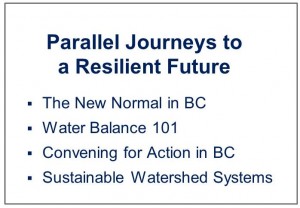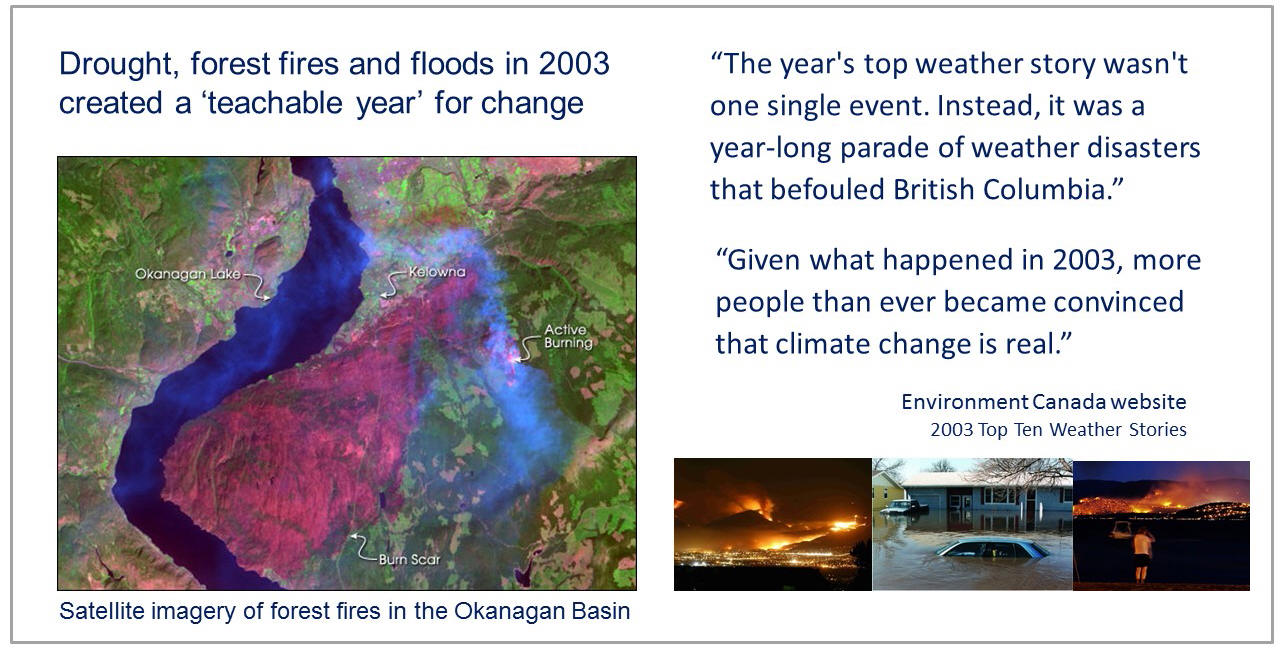YOUTUBE VIDEO: Rising to the Challenge at Stormwater Australia 2016 – a changing climate has resulted in "The New Normal in British Columbia" (Module 1)
Note to Reader:
 The keynote presentation by Kim Stephens at the 2016 Rising to the Challenge Conference organized by Stormwater Australia was structured in five parts: a front-end that set the context, followed by four ‘modules’ that elaborated on the theme “parallel journeys” and provided perspective regarding and insight into the “top-down & bottom-up” approach that characterizes collaboration in the British Columbia local government setting.
The keynote presentation by Kim Stephens at the 2016 Rising to the Challenge Conference organized by Stormwater Australia was structured in five parts: a front-end that set the context, followed by four ‘modules’ that elaborated on the theme “parallel journeys” and provided perspective regarding and insight into the “top-down & bottom-up” approach that characterizes collaboration in the British Columbia local government setting.
Module 1, The New Normal in BC, is the subject of the YouTube video presented below.
The Climate in BC is Changing: Wetter, Warmer Winters; Longer, Drier Summers
For British Columbians, 2015 was the year of the great drought, dwindling snow packs, melting glaciers, beleaguered salmon runs and a costly forest fire season, followed by windstorms and heavy rains. Launched from a powerful El Nino, storms caused the single largest electrical outage in the province’s history. The 2015 Drought was selected as the Top Story of 2015 in a poll conducted by CBC radio and television.
The drought that extended from Vancouver Island to Manitoba and from Mexico to the Yukon suggests that Western North America may be crossing an invisible threshold into a different hydro-meteorological regime.

Relationship between Land and Water
“2015 ranks with 2003 as a defining teachable year. Lessons learned will inform how local governments move forward with a ‘water balance’ approach to rainwater management, protection of watershed function and land servicing,” observes Kim Stephens, Executive Director with the Partnership for Water Sustainability in BC.
“Communities in southwest BC dodged a bullet in 2015. The clock is ticking. Communities need to leverage this teachable year and seize opportunities to change how the water resource is viewed and managed. This starts with an understanding of the relationship between land and water,” emphasizes Kim Stephens.
“Restoring the absorbency of the urban landscape would stretch the seasonal population-support capacities of water storage reservoirs – by reducing demand for landscape irrigation water – and sustain environmental flows during droughts. It would also reduce stream erosion in wet weather.”
”Too often people think of land and water as being independent – almost like silos. But what we do on the land, and whether we treat the land with respect, has direct implications and consequences for water use. The new Water Sustainability Act connects these dots,” concludes Kim Stephens.
To Learn More:
Download Parallel Journeys to a Resilient Future: Water Cycle / Water Balance Approaches in Australia and British Columbia – 2001 to 2016 and Beyond to view a PDF copy of the entire PowerPoint presentation by Kim Stephens.
Read Context for the 2015 Drought: What Happens on the Land Matters!
To watch Dan Burritt interview Kim Stephens on “CBC News at 6″, click on CBC Poll: 2015 Drought is British Columbia’s “Top Story of the Year”
Below, the set of 8 slides from Module 1 are presented for convenience of reference when the reader views the YouTube video (10:37 minutes).









